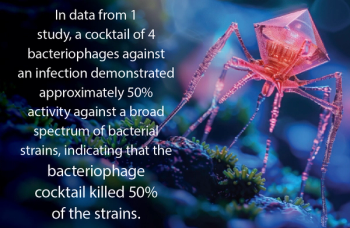
Eliminating Mandatory Glove Use in Contact with Isolated Patients Increases Hand Hygiene Compliance
The requirement to wear gloves when caring for patients on contact precautions may cause personnel to neglect hand hygiene before aseptic procedures, thereby increasing infection transmission. Cusini et al. (2013) sought to assess the compliance with hand hygiene before and after eliminating mandatory glove use for patients on contact precautions.
The researchers assessed hand hygiene compliance of HCW taking care of 50 adult patients colonized with MDR microorganisms before (2009) and six months after (2012) eliminating the mandatory wearing of gloves. This policy change was implemented by the infection control team and communicated to all hospital floors. Along with this policy change, we routinely provided hand hygiene training to HCW on all floors. Hand hygiene observation was performed by two trained infection control nurses during routine care using a standardized questionnaire.
Cusini et al. (2013) observed 426 hand hygiene indications before the policy change and 492 six months after policy change. Compared to 2009, they observed a significantly higher compliance with hand hygiene in patients colonized with MDR microorganisms in 2012 [85.4%, (95% CI 82.2-88.5) versus 51.9 %, (95% CI 47.1-56.6); p< 0.001]. In particular, compliance improved before performing invasive procedures: [72.0% (95%CI 61.6-82.4) vs. 23.9% (95%CI 14.8-32.9); p< 0.001] , and before patient contact [76.7% (95%CI 68.9-84.5) vs. 32.3 (95%CI 24.0-40.5); p<0.001]. Hand hygiene compliance after patient contact remained high [93.5% (95%CI 89.2-97.9) in 2012 vs. 94.3% (95%CI 89.8.2-98.8) in 2009; NS]. During the same period, they observed a smaller increase in hand hygiene compliance for the entire hospital (17.5% hospital-wide versus 33.5% in patients on contact precautions).
The researchers concluded that eliminating mandatory glove use in contact with isolated patients increased hand hygiene compliance, particularly before invasive procedures and before patient contacts. Glove use may cause healthcare workers to bypass hand hygiene. The potential impact on the risk of MDR organism transmission should be determined next.
Reference: Cusini A, Nydegger D, Löhri T, Mühlemann K and Marschall J. Oral presentation O004 at 2nd International Conference on Prevention and Infection Control (ICPIC 2013): Improved hand hygiene compliance after eliminating mandatory glove use for patients on contact precautions. Antimicrobial Resistance and Infection Control 2013, 2(Suppl 1):O4 doi:10.1186/2047-2994-2-S1-O4
Newsletter
Stay prepared and protected with Infection Control Today's newsletter, delivering essential updates, best practices, and expert insights for infection preventionists.






